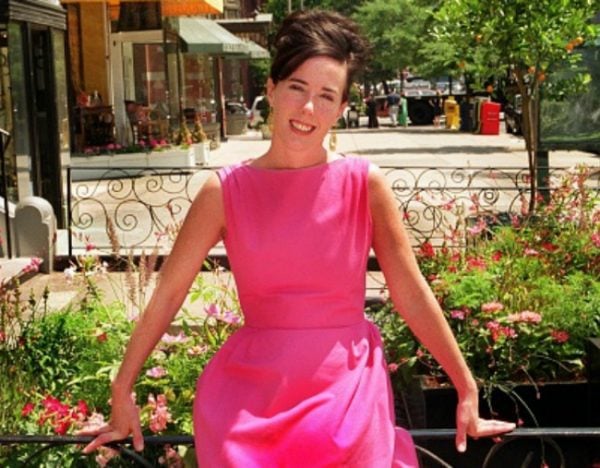On Tuesday, Kate Spade was found dead in her New York City apartment at the age of 55.
The fashion designer was found by her housekeeper at her home on Park Avenue on Manhattan’s Upper East Side, the New York Daily News reported, citing unnamed police officials. It’s understood she took her own life.
Associated Press reports her husband, Andy, was home when her death was discovered, while their 13-year-old daughter, Frances Beatrix Spade, was at school.
Spade’s death came with outpourings of grief, musings of talent and saddened reflections on a great life lost.
Above all, the world took a breath and the world took note: Mental health doesn’t discriminate and its throes take no prisoners. The sentiment was loud, clear and – in the case of Kate Spade – too late. Check on your mates, hold your family tight, ask the people around you if they’re doing OK.
Kate Spade, in her many years in the public eye, has become the face of a world that haunts its own celebrities.
In the wake of her death, Spade’s older sister Reta Saffo told Mail Online she struggled for years with bipolar disorder, but was reportedly too scared to seek help in case it hurt her brand.
“My little sister Katy was a precious, precious little person,” she said. “Genuine in almost every way.
“Just dear – but she was surrounded by YES people, for far too long, therefore she did not receive the proper care for what I believed to be (and tried numerous times to get her help for) bipolar disorder… stemming from her immense celebrity.
“We’d get sooo close to packing her bags, but — in the end, the ‘image’ of her brand (happy-go-lucky Kate Spade) was more important for her to keep up. She was definitely worried about what people would say if they found out.”


Top Comments
“Just dear – but she was surrounded by YES people, for far too long,
therefore she did not receive the proper care for what I believed to be
(and tried numerous times to get her help for) bipolar disorder…
stemming from her immense celebrity.
I am confused by this, bipolar is a genetic condition. It can be exacerbated by stress but you can't develop it if it's not in your genes. Similarly, you can't help having it or make it go away through treatment.
Sad...and painfully sad because of the extenuating circumsrances
Tl;dr, long and personal one
No treatment, for self desire (keeping appearances, the brave face), facilitators of said desires, ye olde "stigma" - partly societal, but partly personal
And it ends in suicide, pressures too much, focus on the world and not the self, a self fulfilling prophecy until its fight (get treated) or flight (escape - and ideas as deep seated as cutting or suicide become all pervasive).
A lack of education, too. Just trusting in the psych (they wont tell you everything, it gets cognitive, technical and pretty physiological - more than a couple of years at uni to wrap your head around to treat people)
I have depression and anxiety, on a bed of ptsd. I self resolve with workaholism (especially in an office environment, where i cant perform as well). Yes, i once wanted to kill myself, after my psychotic episode.
Im still a mess. But while i now work two jobs to live okay, theyre customer facing, no need to cover myself by working too long. A pain, yes, but im happier, my condition is managed not the best, but better than in stressful work.
My advice? Take care of number one, dont martyr yourself (nobody asked). Therapy, meds, changes. Openness to support, honesty in emotions, screw those who won't listen and screw those who put you on pedestals - don't listen to them, have your own label and not labes people put on you.
My mental health affects me, but doesnt make me, even if i have to fight it again tomorrow and i hate it and wish it would just go away.
This is sad, im nothing but sorry to hear this and read this
Oh and rehab? Whatever nonsense Scientology and outright quacks sell you?Just another Hotel California for big bucks.
My management? A psych every six months, try to remember to take my meds, and research the hell out of everything to do with my conditions and my medicine - there's a wealth of info on the net.
Because checking on someone, R U Ok day? "If you need help" Lifeline adverts at the end of these articles? These are bandaid solutions and the softly-softly approach to suicide.
Time to stop focussing on the tragedy of suicide and focus instead on the thirteen reasons why it happened in the first place - another lesson i feel has been forgotten.
Rest in peace, Kate Spade - but im sure plenty wish you werent resting just yet